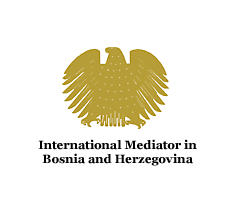TRIP REPORT 2004-2 - 29-5 MARCH 2004
IntroductionThe recent developments in Kosovo have raised concern throughout Europe over the pace of reform and the improvement of inter-ethnic relations in the region. While Kosovo is not Bosnia and Herzegovina (BaH), it does demonstrate how ethnic tensions can spillover and create a chain reaction. In BaH the international community has increased the pace of reform in an effort to end the international mission and begin the negotiations for a Stabilization and Association Agreement with the European Union and the Partnership for Peace program in NATO. However, in recent months it has been difficult to assess exactly how much progress has been made in Bosnia and Herzegovina. On the one hand, parties at the state and entity levels continue to struggle with competing visions of the final structure of the state of Bosnia and Herzegovina, and many reforms continue to be ordered by the High Representative. Most issues are still seen through the prism of ethnic considerations and reconstruction is not finished. On the other hand, there are some noticeable improvements in the level of professional cooperation at all levels. According to the EU, some progress has been made on the necessary reforms to begin negotiations on a Stabilization and Association Agreement, although much more needs to be done. In addition, procedures are in place to hire public employees; there is agreement on unified defence ministry; the BaH Ministry for Human Rights and Refugees has taken over the return and reconstruction process; and much of the discussions focus on economic development as the linchpin for completing the peace process successfully.
Recently an initiative has been started by the Bosniac community to eliminate the names "Republika Srpska" and "Federation" from the names of the entities. This initiative has gained support since the BaH Constitutional Court ruled that names of municipalities with the prefix "Serb" had to be changed. The Serb political parties have reacted very negatively, and many are calling for a revision of the Dayton Agreement or consideration of the withdrawal of Serbs from the BaH institutions. In the context of the recent escalation in Kosovo, it is clear that the former Yugoslavia is not yet beyond falling back into conflict. On the contrary, if the international community is not careful it could find itself in a serious crisis in BaH. The international community has been seeking to present BaH as a normal post communist state in transition that is struggling with democracy, and this is not yet the case. There is still no consensus or strong commitment among the political leaders to the ideal of a democratic state with equal rights for each citizen regardless of their ethnic background. This is most evident in the fact that proportional representation has been extremely difficult to implement and is still far from being satisfactory, especially at the local level.
On this visit the Mediator visited Canton 10 as part of the Concluding Strategy. The Mediator was accompanied by the mediation team: Amela Curkovic, Juan Diaz and Dieter Wolkewitz. They are grateful for the contributions by the Office of the Ombudsman of the Federation of Bosnia and Herzegovina during briefings and mediations. The delegation would like to express its special gratitude to OSCE Operations in BaH, OHR and the German Embassy for their support. Keeping in line with the strategy of handing over international responsibilities to BaH institutions, the Mediator would like to thank the BaH Ministry for Human Rights and Refugees for its cooperation. The team was accompanied by Mr. Mujo Jejna, Assistant to the Minister for Refugee Issues and Mr. Drago Borovcanin, Assistant to the Minister for Human Rights Issues, and Mr. Dragan Papac, interpreter. In addition, special appreciation is given to Austrian Airlines, the prefer carrier of the mediation team.

